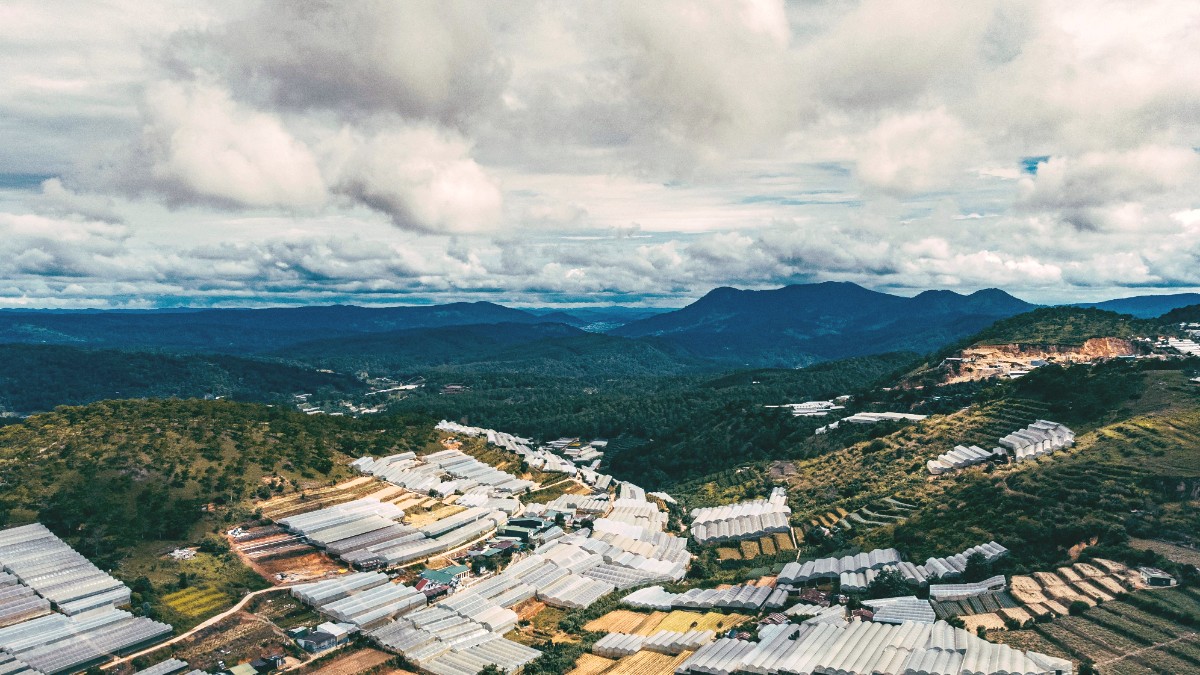
Vietnam
Dalat's cool climate and fertile agricultural land yield a rich bounty of fresh produce, notably vegetables, fruits (like famous strawberries), and flowers. The city's French colonial history also left its mark, influencing certain dishes and dining styles.
Unlike the sweeter flavors of Southern Vietnamese cuisine, Dalat's dishes often lean towards savory, comforting, and sometimes spicy profiles, fitting for the cooler weather.
Dalat's cuisine is distinct within the Central Highlands, emphasizing freshness, warmth, and a slight French influence. Many dishes are unique to the city, like Bánh Mì Xíu Mại, which has a different take on the popular Vietnamese baguette.
The region's specific agricultural products, like artichokes and strawberries, also create local specialties. These ingredients are central to Dalat's culinary identity.
The cooler climate influences hearty, warming dishes, distinguishing them from the lighter, often sweeter fare of southern Vietnam.
Dalat's iconic breakfast. Small, savory pork meatballs (xíu mại) served in a rich, mild tomato sauce. You eat it by dipping warm, crusty baguette pieces directly into the sauce. Often with Vietnamese sausage and fresh herbs.
Iconic Dalat breakfast
Steamed rice paper rolls (bánh ướt) served with shredded chicken (lòng gà), pork intestines, fresh herbs, and a light, savory fish sauce dressing. It has an unique texture and flavor profile, distinct from other Vietnamese noodle dishes.
Unique rice paper dish
A very popular street food snack, especially at the Night Market. This "pizza" is a grilled rice paper with various toppings like minced pork, egg, dried shrimp, green onions, and chili paste, cooked over charcoal until crispy.
Must-try street snack
Dalat is Vietnam's artichoke capital. Try artichoke tea (trà atiso), believed to have health benefits, or artichoke soup (canh atiso), a light and nutritious broth.
A creamy, unique dessert made from fresh avocado, coconut milk, and condensed milk, often topped with a scoop of durian ice cream or shredded coconut. A must-try for dessert lovers.
A few upscale restaurants, often in luxury hotels or beautifully converted French villas, offer refined Vietnamese and international cuisine.
You find abundant mid-range options offering a variety of Vietnamese dishes. Many specialize in local Dalat cuisine, hotpots, grilled dishes, or seafood.
Dalat Night Market (Chợ Đêm) comes alive in the evening. You find Bánh Tráng Nướng, grilled sweet potatoes, various skewers, seafood, and numerous other local snacks.
Countless small, family-run stalls and "hole-in-the-wall" eateries are scattered throughout the city. These places have authentic and affordable local dishes, often specializing in just one or two items.
Look for places busy with locals.
Dalat Market is a spot for fresh produce, local snacks, and some ready-to-eat food. You can buy fresh ingredients or grab a quick bite.
A central hub for culinary discoveries.
Pizzas, pastas, and more
Korean, Japanese, and other Asian dishes
Restaurants serving various international cuisines
Find something different from Vietnamese food
While Vietnamese cuisine uses rice as a staple, cross-contamination is common, and sauces often contain wheat (e.g., soy sauce). Communication can be challenging due to language barriers.
Carry a Translation card with specific allergens in Vietnamese.
Apps like HappyCow help locate vegetarian and vegan restaurants.
Google Translate (with offline Vietnamese downloaded) is an invaluable tool for communication.
For authentic experiences, seek out local stalls and eateries. Do not hesitate to ask for recommendations from your hotel or homestay hosts.
Dalat's food scene is dynamic. New cafes and restaurants open frequently. Exploring side streets and local alleys can lead to delightful culinary discoveries.
Several local tour operators and cooking schools in Dalat offer classes focused on Vietnamese and Dalat-specific dishes. Classes often include a market visit to learn about ingredients, followed by hands-on cooking instruction.
Visit a coffee plantation or a local roastery to learn about the bean-to-cup process, from cultivation to brewing. Many tasting sessions, appreciating Dalat's renowned coffee.
Occasional traditional music or dance performances happen at specific venues or during festivals. Inquire locally about schedules.
Some tours offer visits to ethnic minority villages (e.g., Lat Village near Lang Biang Mountain). These visits have insights into traditional ways of life, weaving, and handicrafts.
Choose responsible and ethical operators who prioritize community benefit and cultural respect.
While formal short-term classes for tourists are limited, learning a few basic Vietnamese phrases from a Vietnamese phrasebook and using them with locals greatly enhances interaction and shows respect.
Simple phrases enrich your experience.
Be adventurous with street food, but choose stalls that are busy and appear clean. High turnover means fresh ingredients.
Observe local dining customs like sharing dishes and chopstick placement for a more respectful experience.
Use translation apps or phrasebooks for dietary needs, especially for allergies. Clear communication makes a difference.
Exploring Dalat's street food scene is a must. Here are some tips for a satisfying experience: